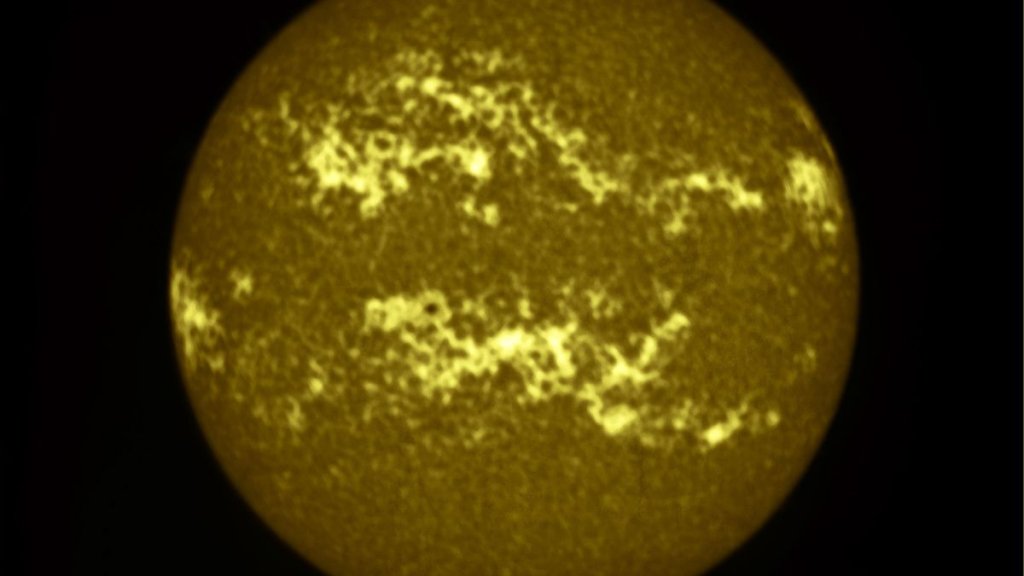
India’s Aditya-L1 solar probe snaps shots of our hyperactive sun during May outburst (photos) (Image Credit: Space.com)
Last month, auroras that may have been the strongest in the past 500 years wowed observers around the world for a full weekend. Now, a space probe has revealed just how chaotic the sun was during this historic light show.
Images of the sun’s disk by India’s Aditya-L1 spacecraft, the country’s first-ever solar mission, a week after the strongest auroras witnessed on May 10 reveal storm-spewing active regions crowding the sun’s equator.
Between May 3 and May 9, NASA’s Solar Dynamics Observatory recorded 82 “notable” solar flares emerging primarily from two active regions near the sun’s equator, called AR3663 and AR3664. These clusters grew complex enough that they erupted multiple times during the week, hurling at least seven coronal mass ejections, or CMEs, toward Earth. These huge clouds of solar plasma began impacting our planet on May 10, sparking incredibly strong, and possibly historic, auroras.
Two instruments onboard Aditya-L1 with capabilities for in-situ measurements, named ASPEX and MAG, captured the event during its peak on May 10 and May 11 when the storm passed through the probe’s location, the Earth-sun Lagrange Point 1. This is a gravitationally stable spot about 930,000 miles (1.5 million kilometers) from Earth, in the direction of the sun.
Two other instruments, SoLEXS and HEL1OS, had recorded sharp spikes in a light curve corresponding to the family of X-class and M-class solar flares blasted out of the sun last month, according to the Indian Space Research Organisation (ISRO), which operates the Aditya-L1 mission.
Related: We may have just witnessed some of the strongest auroras in 500 years

The storm was also witnessed by the Indian moon orbiter Chandrayaan 2, which recorded X-rays from the solar flares as well as a spike in nearby high-energy particles, ISRO previously said.
Last month’s sun outburst was so intense that it spurred the U.S. National Oceanic and Atmospheric Administration to issue its first solar storm warning in two decades. In the days following the intense auroras, the active region responsible for them, AR3664, rotated out of view of Earth and into the view of Mars, which witnessed a supreme X12 flare on May 20. The flare was so strong that an astronaut standing next to NASA’s Curiosity rover at the time would have been showered with a radiation dose equivalent to 30 chest X-rays, NASA said in a statement on Monday (June 10).
The storm was, perhaps unsurprisingly, the biggest surge recorded by Curiosity’s Radiation Assessment Detector instrument, or RAD, since the rover touched down in Mars’ Gale Crater 12 years ago. Black and white images snapped using the rover’s navigation cameras “danced with snow” as the storm’s charged particles hit the cameras, NASA said. The energetic particles also inundated a camera onboard the Mars Odyssey orbiter, causing it to momentarily power down.
By the end of May, the sunspot-clustered region had circled back within view of our planet, and earned the new designation AR3697.
“I wouldn’t be surprised if this active region on the sun continues to erupt, meaning even more solar storms at both Earth and Mars over the coming weeks,” Don Hassler, RAD’s principal investigator at the Southwest Research Institute in Colorado, said in the NASA statement.





